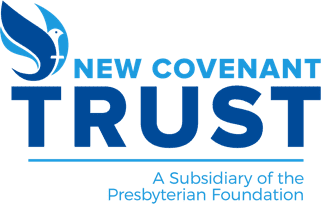
Many of us are now a few weeks into pursuing our New Year’s resolutions for 2025. (I won’t ask how you’re doing if you don’t ask how I’m doing!) Many resolutions that we make require some sort of habit or behavior change, and often our success at achieving these goals will be correlated to the actions we take and the effort we put in. More exercise means better fitness results, more studying means better grades, etc.
Investing, however, is one of the rare activities where doing less often results in earning more. Investing is more like navigating heavy traffic, where the driver who frantically switches lanes back and forth often ends up behind the car they started in front of — with more stress and risk to boot. Wise and successful investing is often about embracing the simplicity of developing and sticking to a thoughtful, long-term. and prudent plan, focusing on what’s important and tuning out the incessant noise.
Here are three ways to do that in 2025.
Take a broad and evidence-based approach.
Modern academic research and growing empirical data sets have given investors increasing insight into what drives investor success over time. For example, asset allocation — the mix between stocks, bonds, cash and other assets — has been shown in multiple replicated studies to be over nine times as important as market timing, stock picking or fund chasing in explaining long-term returns over time.
Lower expenses have been shown to correlate with higher returns, and more diversification has been shown to strengthen risk-adjusted returns and smooth volatility. Also, active managers in highly efficient markets, like large-cap U.S. equities, have delivered long-term success rates as low as 3%, meaning fund managers setting out to beat the S&P 500 over 20 years have failed 97% of the time in recent periods.
Incorporating these and many other empirically backed, evidence-based findings into your investment plan will allow you to avoid many of the most common, and most avoidable, investment mistakes that lead to lower returns.
Maintain an appropriate zoom, especially when consuming news.
One of the many drawbacks to much of the business and market news programs is that their anchors and guests often don’t make distinctions for the time horizon they’re considering when discussing a stock, market or the economy.
Pundits often breathlessly debate the markets minute-to-minute response to a single economic data release. For day traders, this may be relevant, but for long-term investors, a single day, month or even year will eventually be a blip on their long-term return chart.
Headlines for daily market moves often use words like “surge” for a gain and “plummet” for a loss, offering no explanation as to what the daily move means in the context of the month, quarter or year. Investors and their advisors will have to rely upon themselves to keep perspective, as the financial media almost certainly won’t do it for us.
Keep the main thing the main thing.
It’s a continuous gift and blessing to be able to serve churches and other ministry-focused clients. The impact our constituents have on individuals, families and the community is a daily inspiration.
Investing smarter and not harder is not only the evidence-based approach to giving ourselves the best chance at maximizing efficient returns for a given level of risk, it’s also the approach that limits unproductive stress or distraction from the central mission that so many of our institutions pursue each day.
Advice about our physical health from sophisticated experts like our doctors often boils down to exercising, eating well and getting enough sleep. Similarly, for investors, determining an appropriate asset allocation, keeping fees low, diversifying broadly and staying disciplined for long periods of time will get you most of the way to financial health.
Let us resolve this year to continue investing smarter and not harder. Continue to give it time and you just may be surprised at how well you can do by doing less.
As always, New Covenant Trust Company is available to answer questions and offer additional guidance. Please don’t hesitate to reach out to us at 800-858-6127, Option 6.
Market Updates at a Glance
The Dow Jones Industrial Average (DJIA) finished December at 42,544, down -5.27% for the month and up +12.88% in 2024. The S&P 500 closed December at 5,882, down -2.50% for the month and up +23.31% year-to-date. The NASDAQ Composite gained +0.48% in December, up +28.64% for the year. Small-company stocks as measured by the Russell 2000 ended December down -8.40% for the month, up +10.02% so far for the year. Communication services (+33%) was the best-performing sector in 2024.
